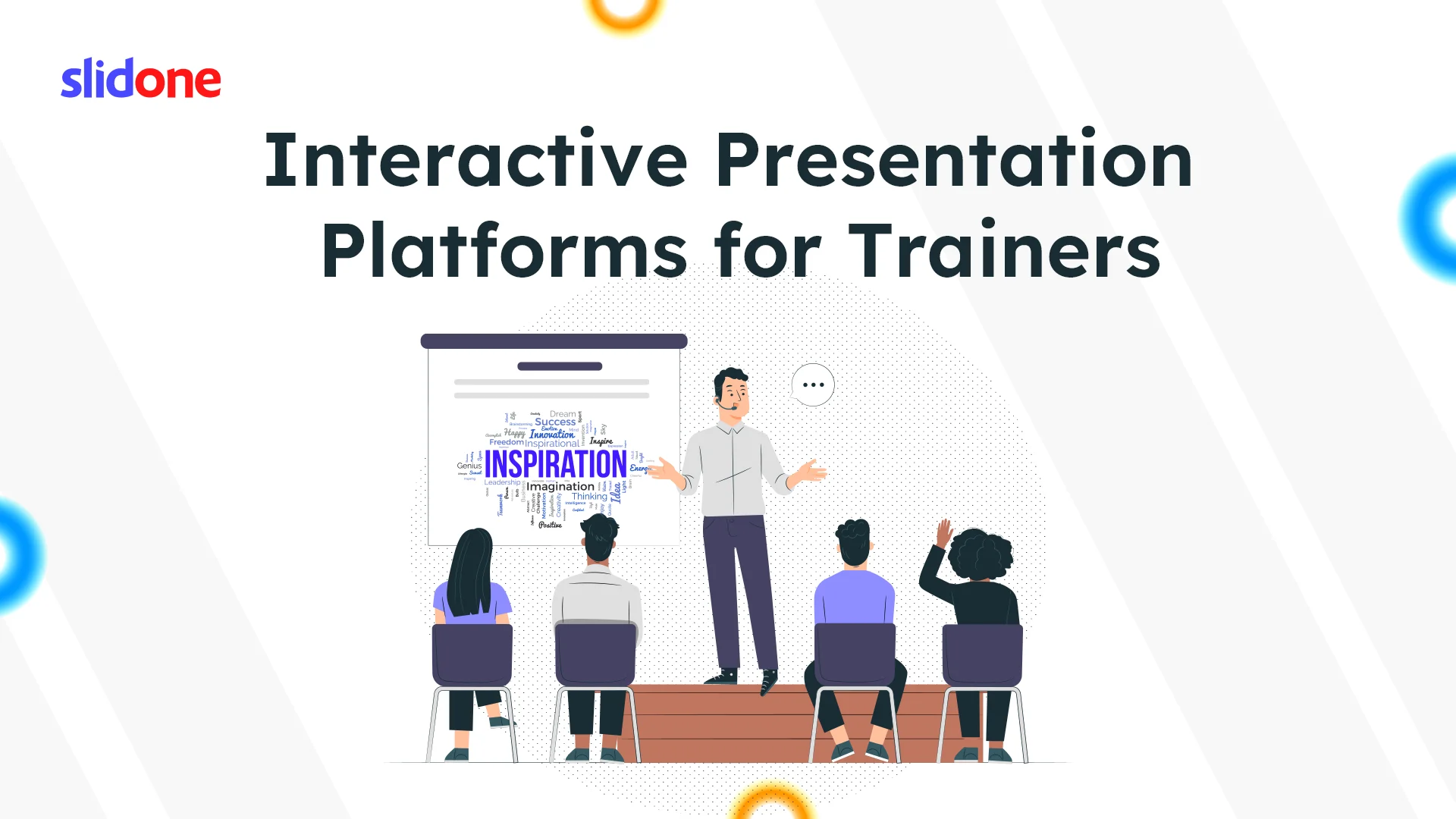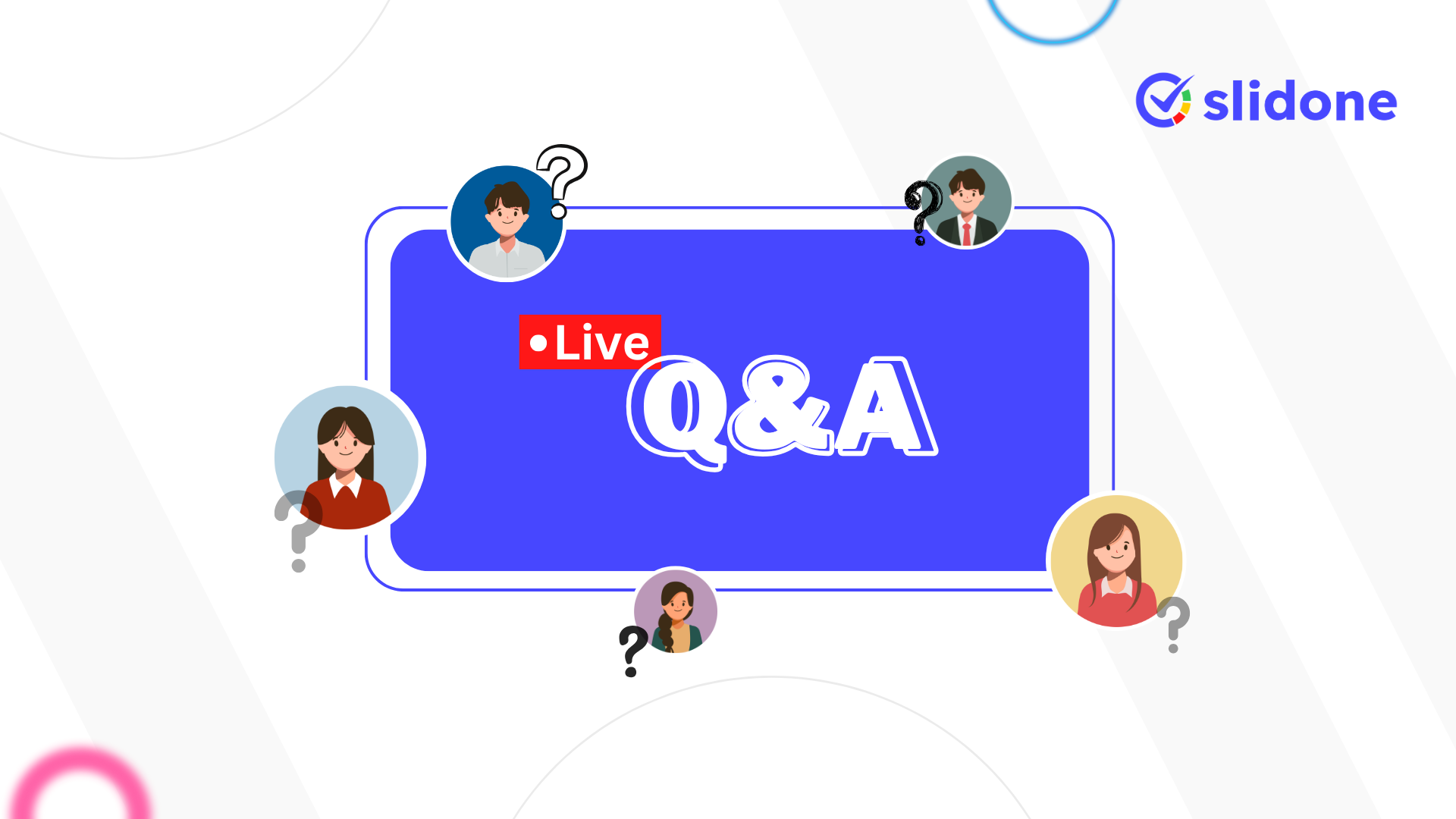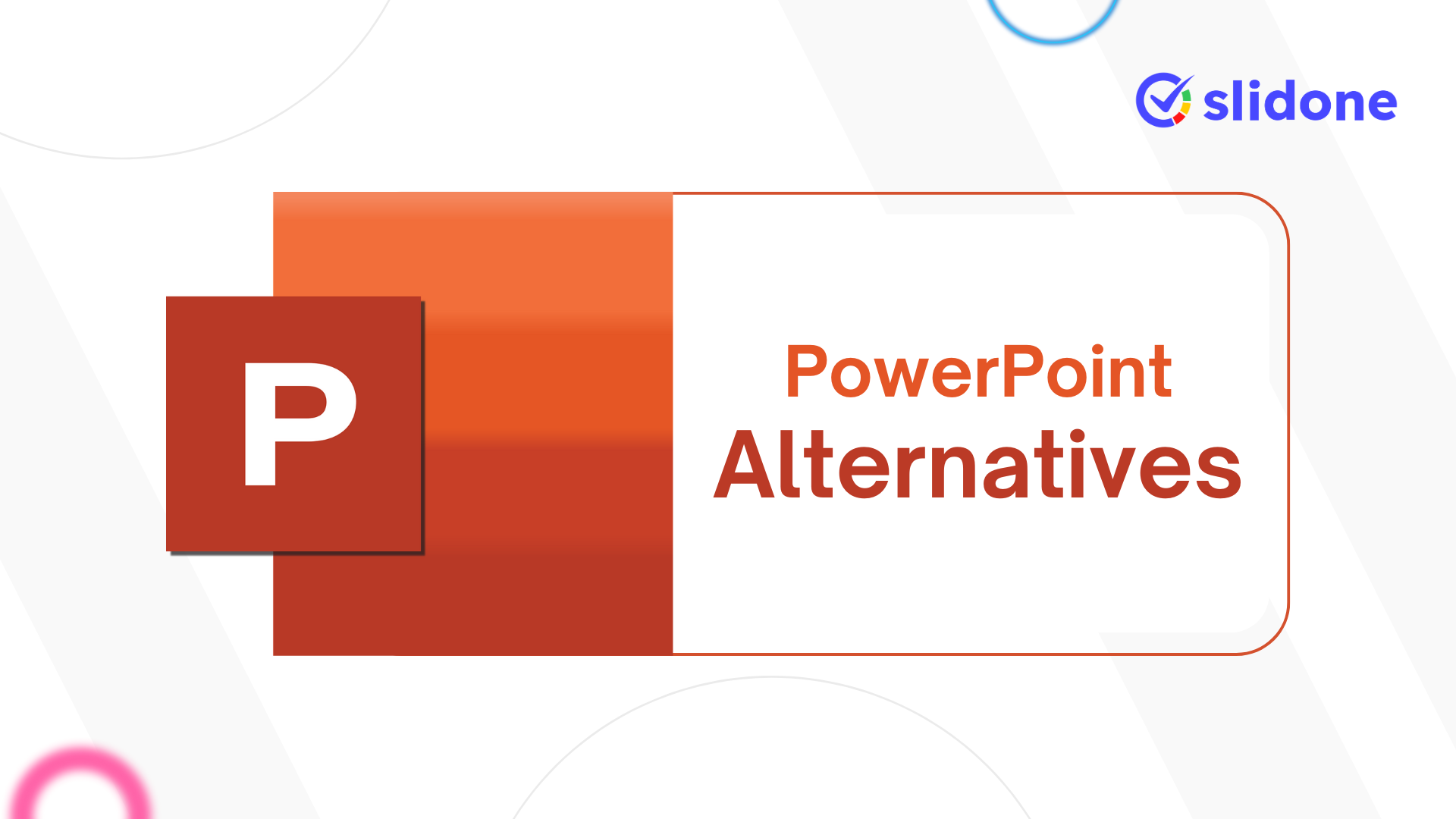Training sessions have become boring especially when such training involves lots of theorization, however, with the help of and creation of interactive platforms, this is changing. Through integration of real time interaction tools, multimedia features and game aspect, trainers are able to provide learning not only as a process of imparting knowledge and skills but also as fun. When it comes to presenting to colleagues in the corporate environment, to training new employees, or to delivering educational workshops, these interactive presentation platforms offer great opportunities for reaching out to your audience successfully.
General characteristics of the interactive presentations
Real-Time Engagement Tools
Interactive presentation tools facilitate active participation during the learning process because they allow for relational communication with the material being presented.
Polls and Surveys
Use instant polls for getting opinions or feedback on an immediate basis. For instance, when on the poll, use questions like, “Idea to focus on:” to ensure participants are engaged and their contribution is valued. As such, during the session, be sure to follow up with additional questions so that the direction of the session is influenced by the results. This allows the attendees to be retained in touch and interested through real-time visual outcomes in the meetings.
Quizzes and Leaderboards
Add competitions into the sessions and use the quizzes with the results shown on a board. For example, when it is time to explain points that are going to be considered important, a quiz could be given to check on the participants’ comprehension. Include timed activities to increase interest during the event, ensuring that participants pay attention and provide their input. Leaderboards increase engagement while maintaining healthy competition among the majority of the participants.
Word Clouds
The group thoughts can be displayed via live word cloud whereby ideas or feedback can be made interactive like during a brainstorm session. For example, you might ask, “What’s your biggest challenge at work?” so that you can extract key points rapidly. Assign certain colors to organize ideas in the same manner as a particular trend or focus that allows each participant to quickly find them and navigate the space.
Multimedia Integration
Visuals help break down information and color sessions thus making them more interesting.
Videos and Animations
In my opinion, concepts can be explained with ease if they make a short video or even a GIF. For instance, an explainer video in financial metrics helps convey data to general audiences with ease through storytelling. It includes animations such as step by step processes which helps to ensure all participants remain engaged and focused. Utilize their attention areas or breaks within the video in order to direct a question to the viewers and make sure that they understood the previous point or concept being discussed.
Infographics
Bullet important points and illustrate them in some other spicy forms such as flow chart or bar chart. For instance, an organizational flowchart applied to project timelines makes organizational work flows more understandable. Always use header and subheadings, with color codes to make it easy for you to discern which part of the document is most important or which parts are summarizing key activities. Infographics are also used as treasures that audiences can refer to at their own convenience in the future.
Seamless LMS Integration
LMS integration provides solutions for the management of training related chores and materials.
Effortless Imports
Probably, one has to easily import lesson plans or training modules from applications such as PowerPoint, Google Slides, and more. This puts down time and helps in invoking similar formats in different platforms. Modulate the imported material in the LMS to provide a need base solution making the process dynamic and productive.
Data Centralization
Make it easy to access session data and look at client feedback and other performance measures in a single location. That makes further calls and the tracking of progress easy. If data for training is centralized, then the trainers can figure out trends that may be present across multiple sessions, which proves helpful in long term planning or modifying a training curriculum.
Analytics and Insights
Self-generated data helps the trainer in future training sessions as they reveal the behavior of the participants.
Engagement Metrics
Learn which participant spent how much time on which slide, or how many participants completed a poll in reaction to the presentation. These ideas reveal where attention was gained and where modifications might be made. In addition to this data, one can enhance the impact of future presentations.
Feedback Analysis
Conduct qualitative summaries in which a given set of results will be analyzed for common sentiments or issues. Adapt the following sessions according to the feedback in order to fill in the gaps in the participants’ knowledge. This makes sure that your training is continuously pertinent and therefore has clear effects on various groups of the people.
Device Compatibility
Cross-device functionality focuses not only on the participants of customization varieties but also on all types of sessions.
Accessible Anywhere
More importantly, participants can join from their laptops, tablets, or smartphones, leaving none of the participants’ tail behind. The fact that it is very flexible means that those benefactors who are attending the meeting from other regions or those who can attend physically do not require complex preparations.
Inclusivity
Even in cases where device resources are constrained, such as extending to mobile and tablet, it is equally possible to engage efficiently. It is especially precious in the partially digital environment when the need to keep as many people connected as possible is of paramount importance for learning and teamwork.
Practical Applications In Training
Onboarding
Engage New Hires
Some examples of thoughts you can collect using word clouds are “What brings you passion to join this team?” This causes excitement among them and makes them feel wanted. Continue with a face to face discussion which will create openness by creating a culture of those ideas or thoughts being shared, which should be motivating.
Interactive Quizzes
Take quizzes that test their knowledge of the company’s policies, or incorporate organizational values into the learning material. Make use of elements such as leaderboards so as to enhance the fun content in learning. Include ‘what if’ situations or role based questions to ensure they get a real feel of issues in their new position.
Corporate Training
Scenario Simulations
Create actual situations closer to the sort that members will encounter. Live polls can be utilized to offer solutions getting audience participation and decision making abilities of attendees. Subsequently we share the results of the discussion aimed at comparing certain ways and their consequences.
Skills Assessment
Integrate principles of game design by challenging clients to take and complete quick quizzes to ensure knowledge retention after every session. Give instant feedback on answers to enhance learning of the points made. Utilize the list to increase competition and engage participants, to ensure they are productive in the training.
Educational Workshops
Collaborative Learning
To encourage people to think creatively and at the same time make them use a number of resources, create groups to collaborate on common slides. Studies can be presented before each team helping students learn from their peers. Divide the groups using the topics where possible to have cross views and better brainstorming.
Gamified Activities
Add issues or quiz programs into the curriculum to make workshops fun as well as enthusiasm. Take the time and implement various quizzes within the set time frame and make the protocol include a leaderboard. Use questions related to the workshop topic or jigsaw puzzles as a fun way of striving into the deeper understanding of the problem.
Advantages of using Software that Supports Interaction
The interaction, or turbocharging, of educational presentation tools refers to the boosting of the benefits already presented.
1. Boosted Engagement
Real-time tools work on capturing participants’ attention and that is achieved in this lesson. For example, a quiz after each module helps apply active listening and strengthens knowledge. Introducing live polls after certain time gaps also checks the audience response and increases the audience interaction.
2. Improved Retention
Group activities make it easier to pass important information because everyone is actively involved. Suppose a session incorporating such items like videos or animations is conducted; such an approach makes a lasting impression. More time limited quizzes or electronic exercises also help to reinforce learning in a more fun and effective way.
3. Enhanced Collaboration
Group related tools foster togetherness and knowledge sharing among the workers. Grouping in the ‘Edit Together’ mode promotes giving and receiving of ideas from the peers as the participants work on a similar slide, a live word cloud, etc. Not only does all these enhance teamwork, it also promotes the differentiation of various problem solving skills.
4. Efficient Training
Templates in advance and pre-programmed analyses saves additional time required for preparing the trainers hence more time in delivering. These assessments provide information that trainers can use to improve the next training session to be held. Templates relevant to certain sectors are incorporated to guarantee material relevance while still looking professional.
Additional Tips for Trainers when using the Interactive Platforms
1. Start Small
Begin with one or two features when getting started, like live polls or word clouds. Do not try to put much too soon, more so when you are still unsure or your target audience has not built enough trust with your blog. Before you use them in your sessions, try the effectiveness of each tool.
2. Keep Sessions Balanced
I also explain to summarize the content in between the interactive slide and the traditional type to keep the flow. It’s important not to inundate participants with too many activities in one sitting. Use only a few Q&A or discussion slides in between the presentation to keep it engaging.
3. Monitor Engagement
Be sure to monitor their partaking levels during each of such an activity that the group engages in. Feedback Real time can be used to gauge the energy and the content created and modified according to it. In case of low level of engagement, display a meter on the screen that alerts the audience and adds fun to the session with an impromptu activity or a quiz.
4. Follow Up
Leaving data at the group level, use session data to pass actionable insights to the participants. For instance, copy key points or poll findings in the after meeting email. In their replies, users may provide constructive feedback that can be used to provide them with additional information that can keep engaging with your brand.
Advantages of Presentation Integration Software
Streamline training sessions with presentation integration software that simplifies content import and supports real-time collaboration. Create engaging, cohesive presentations effortlessly.
Simplify Preparation
Most of the transitions can be imported hence saving time when starting a new presentation from scratch. This reduces the preparation time so that the trainers can dedicate their time to proper session creation. Hearing from our clients — we suggest pre-loaded templates as it maintains the uniformity of the page but allows for variation.
Encourage Collaboration
These features are some of the reasons through which trainers use integration software, for instance, features such as co-editing where the trainer can update his/her presentation together with other trainers in-real time. Interacting is another possible way, where the team members are given the prompt and offer their ideas together, and this boosts team work and presents good content.
Conclusion: Can learning experiences be transformed?
These presentation systems are bringing evolution to the conventional training by making it interesting and covering all parties while incorporating use of data. These tools make it easy for trainers to engage with the learners so as to have effective outcome oriented sessions. With real-time, interaction tools, media, and compatibility with LMS, and other platforms trainers can provide significant learning every time.





Leave a Comment
Your email address will not be published. Required fields are marked *